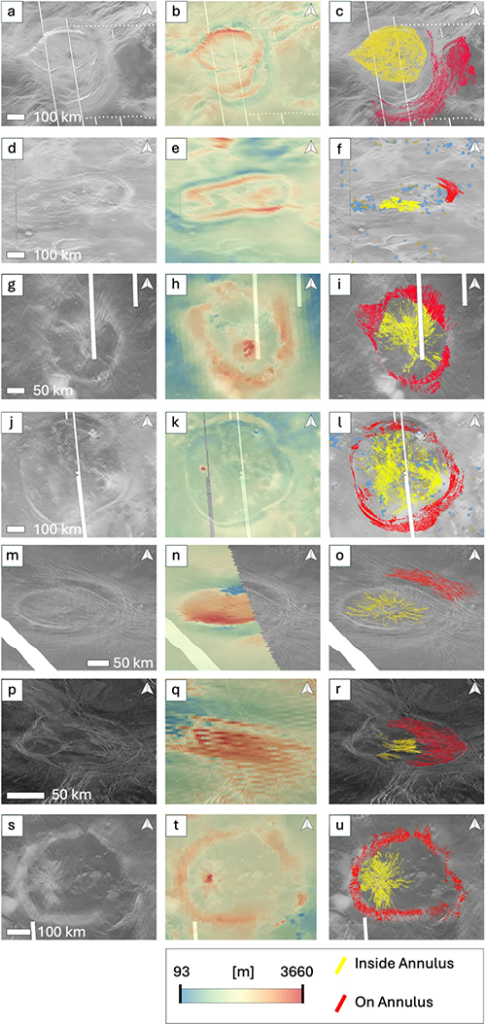Subsurface mechanical architecture of coronae on Venus and its implications for processes governing fractures and seismicity

De Toffoli B. & F. Mazzarini, (2025).
Nature – Scientific Reports, 15(17938). https://doi.org/10.1038/s41598-025-02657-w
Abstract
Coronae are essential to understanding the tectonic evolution of Venus. This study explores their subsurface architecture by analyzing coronae’s fracture populations. We perform fractal analyses of mapped fractures revealing distinct mechanical behaviors between fractures located within the corona annuli and those extending on, and beyond, them. Fractures, thus brittle deformation, along corona annuli affect the whole crust, reaching depths consistent with previous crustal thickness estimates. In contrast, fractures inside corona regions demonstrate notably larger fractured medium thicknesses that scale with corona diameter, pointing to mechanical coupling between the crust and upper mantle. Fracture length distribution analyses further confirm that the deformation is confined to two distinct mechanical layers with contrasting properties on a global scale. Finally, we computed theoretical estimates of moment magnitude suggesting that the investigated fractures have the potential to produce seismic events above the detection limit expected for orbital observations.



Devi effettuare l'accesso per postare un commento.